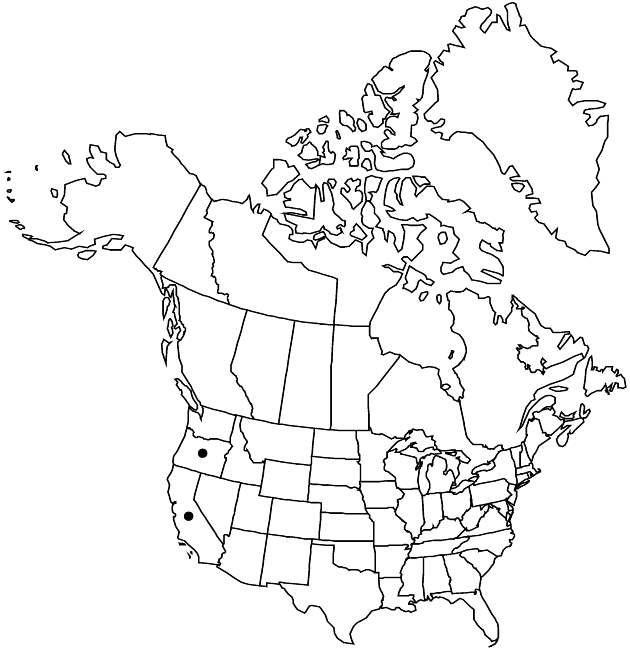Arnica spathulata
Pittonia 3: 103. 1896.
Common names: Klamath arnica
Synonyms: Arnica eastwoodiae RydbergArnica spathulata subsp. eastwoodiae (Rydberg) MaguireArnica spathulata var. eastwoodiae (Rydberg) Ediger & T. M. Barkley
Revision as of 01:08, 27 July 2019 by FNA>Volume Importer
Plants 15–45+ cm. Stems simple or branched. Leaves 3–5 pairs, sometimes crowded toward bases (basal leaves often persistent on sterile rosettes); petiolate (petioles mostly broadly winged, 1–9 × 0.2–1.5 cm); blades elliptic-ovate to spatulate, 2–8 × 1–4 cm, margins subentire to mostly irregularly dentate, apices acute, faces sparsely to densely villous, stipitate-glandular. Heads 1, or 3–9(–25). Involucres turbinate-campanulate. Phyllaries 8–15, broadly to narrowly lanceolate. Ray florets 0. Disc florets 15–50; corollas yellow; anthers yellow. Cypselae black, 5–10 mm, sparsely stipitate-glandular; pappi white, bristles barbellate. 2n = 38, 76.
Phenology: Flowering Apr–Jul.
Habitat: Usually serpentine soils, open, dry oak–conifer forests, disturbed areas
Elevation: 200–1500 m
Discussion
Selected References
None.
Lower Taxa
None.
